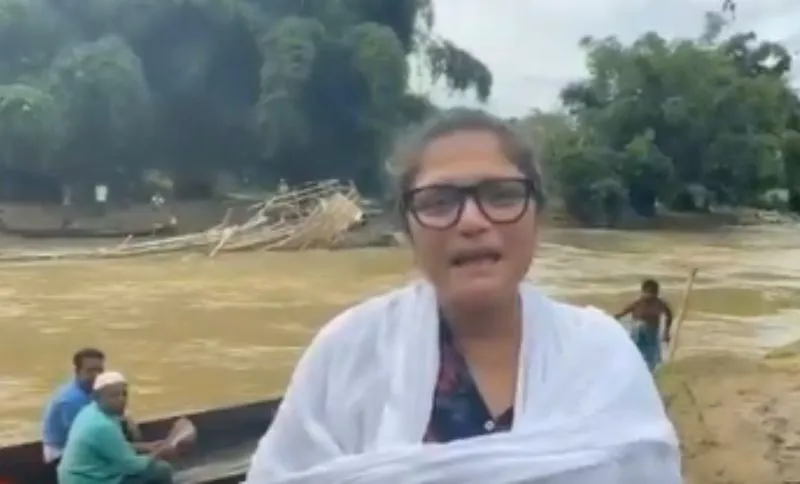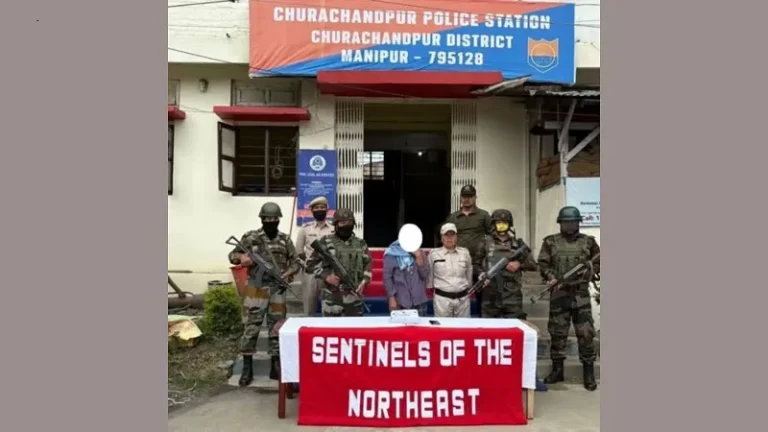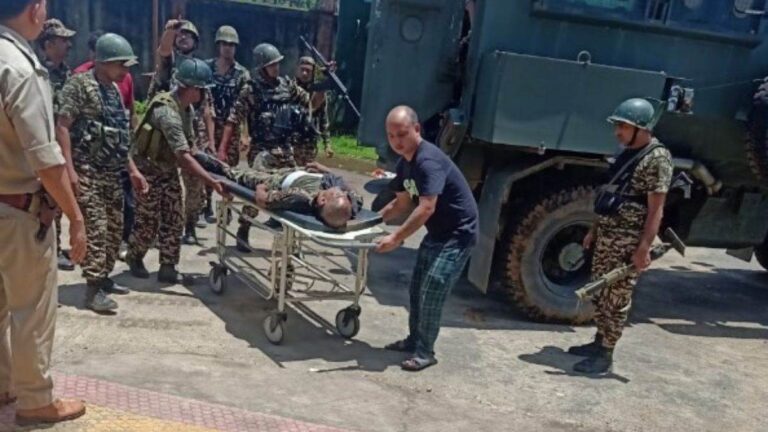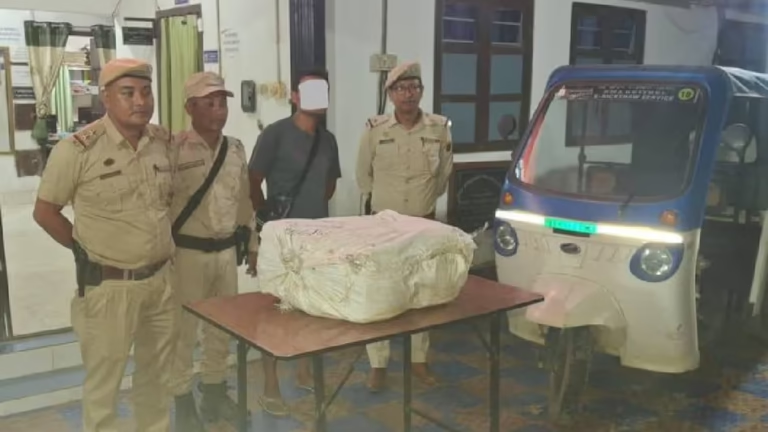Assam: Cachar connectivity disrupted again as bamboo bridge collapses
Summary of the News Article
On July 3, 2025, Assam’s Cachar district saw yet another hit to local connectivity when a temporary bamboo bridge over the Harang River collapsed early Wednesday morning due to a sudden surge in water levels. This makeshift structure had been erected as an emergency workaround after the main concrete bridge on the Silchar–Kalain National Highway gave way two weeks earlier, leaving thousands stranded. While there were no injuries reported this time, residents voiced frustration as essential travel—especially for schoolchildren, patients, and traders—came to a standstill. The district administration, led by Deputy Commissioner Mridul Yadav, immediately mobilized the Public Works Department to begin constructing an iron suspension bridge, aiming for completion by Saturday. Plans for a medium-term Bailey bridge remain delayed by logistics, with materials on site but an engineering team from Ranchi only arriving soon. Meanwhile, repair work on the Gammon Bridge over the Barak River at Badarpurghat continues on track for a July 20 finish
When Life’s Makeshift Bridges Fail: Inside Cachar’s Connectivity Crisis
A Day in the Life Without a Bridge##
Ever tried crossing a river on a rickety raft? Picture that, but replace the raft with a bamboo-lashed plank swaying over churning waters. That’s reality for Cachar’s residents. Two weeks ago, the main Harang River bridge on NH-6 collapsed under overloaded trucks. In a hurry, authorities threw up a bamboo bridge—literally bamboo poles tied together with rope—as a stopgap. But heavy monsoon flows proved too much. On July 3, that temporary lifeline gave way again, leaving thousands—schoolkids clutching backpacks, patients dependent on hospitals, traders hauling perishable goods—stranded on either bank. No one was hurt, but the chaos was palpable
Why Does Cachar Keep Losing Bridges?
The Harang River meanders through Assam’s Barak Valley, carving fertile plains but also threatening its own banks each monsoon. The original concrete bridge, decades old and under constant stress from heavy vehicles, finally buckled on June 18 when two overloaded limestone trucks, reportedly carrying over 120 tonnes—triple the design limit—plowed through its steel girders. Bribes and lax enforcement let these trucks cross unchecked. When that main artery snapped, a bamboo bridge seemed like a quick fix. But bamboo + swollen monsoon currents = disaster waiting to happen. It collapsed less than a week later under rising waters and debris
The Ripple Effect: More Than Just a Broken Bridge
It’s easy to see a bridge collapse and think “it’s just infrastructure.” But delve deeper, and you’ll find stories of missed opportunities and daily hardships:
- Students: Imagine walking miles around muddy fields just to catch a boat or find a longer detour—late for class, drenched, exhausted.
- Patients: Mothers clutching toddlers, elders on crutches, all forced onto unsafe dinghies or motorboats. One wrong move on a slippery plank, and the outcome could be fatal.
- Farmers & Traders: Perishables like vegetables and fish spoil under the sun as they wait hours for a flimsy crossing. Local markets face shortages; prices skyrocket
Connectivity here isn’t a luxury—it’s survival. And every collapse magnifies social inequities.
Political Ripples: Accountability and Backlash
Bridges are symbols of development; when they fail, so does public confidence. Trinamool MP Sushmita Dev lambasted the state government for “empty assurances” and demanded SDRF boats be pressed into service—boats that sit idle while villagers risk rickety rafts. Opposition leaders see political mileage; ruling party officials scramble to shift blame onto PWD officers or “unprecedented weather.” Yet in the court of public opinion, leadership is judged by results—stable, long-lasting connectivity—not by press releases
Beyond Bridges: Holistic Connectivity
Connectivity isn’t solely about steel and bamboo. It’s about networks:
- Roads linking villages to towns.
- Waterways as lifelines for remote hamlets.
- Digital bridges: mobile connectivity for telemedicine, online schooling.
When one link breaks, the whole chain falters. Assam’s rural revival needs integrated planning: multi-modal transport corridors, disaster-resilient structures, and community-driven maintenance. Only then can the love of the land withstand the fury of rivers .
Frequently Asked Questions (FAQs)
- Why did the temporary bamboo bridge over the Harang River collapse so quickly?
The monsoon-swollen river surged with strong currents and debris, overwhelming the bamboo poles, which—while fast to erect—lack the tensile strength of steel or iron suspension bridges . - What immediate solutions has the district administration proposed?
Deputy Commissioner Mridul Yadav announced commencement of an iron suspension bridge, aiming for completion by Saturday, while machinery for a Bailey bridge awaits the arrival of an engineering team delayed by landslides . - How is the bridge collapse affecting local residents?
Thousands—including students, patients, and traders—face disrupted commutes, inflated prices for essentials, delayed medical care, and reduced school attendance as they rely on boats or longer detours to cross the river . - What long-term measures can prevent such collapses in the future?
Experts recommend hybrid bridge designs combining Bailey and suspension elements, pre-positioned modular kits before monsoons, community inspection training, and real-time water-level monitoring systems . - Are there any ongoing protests or political reactions?
Yes, locals—led by aggrieved parents, vendors, and caught-in-the-middle commuters—have staged sit-ins and shouted slogans against PWD authorities, while opposition MPs like Sushmita Dev have criticized the state government for inadequate alternatives and unused SDRF boats .






